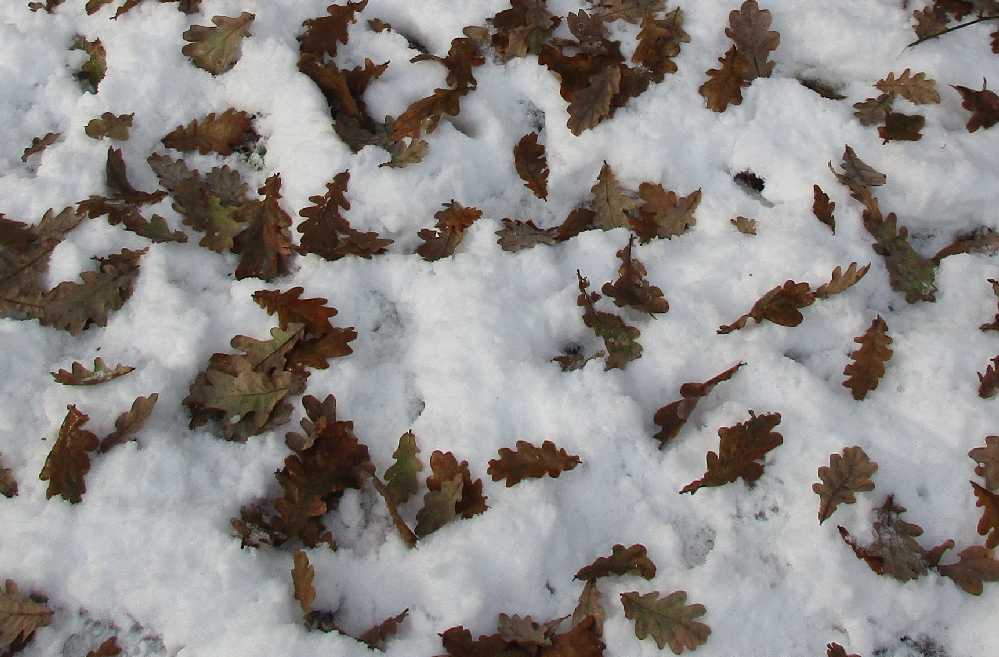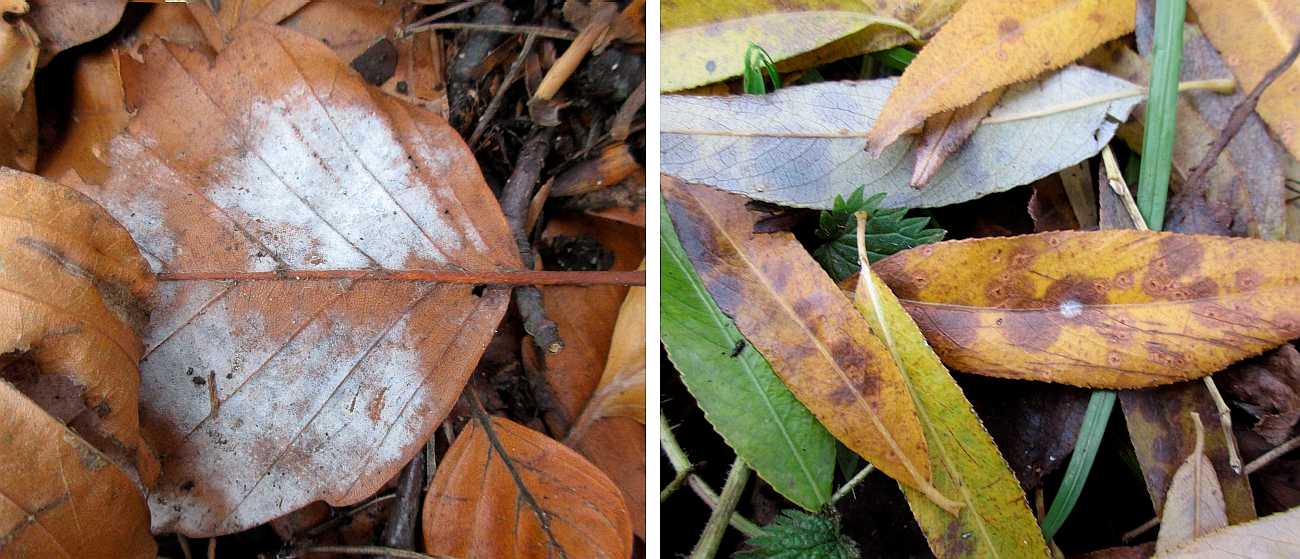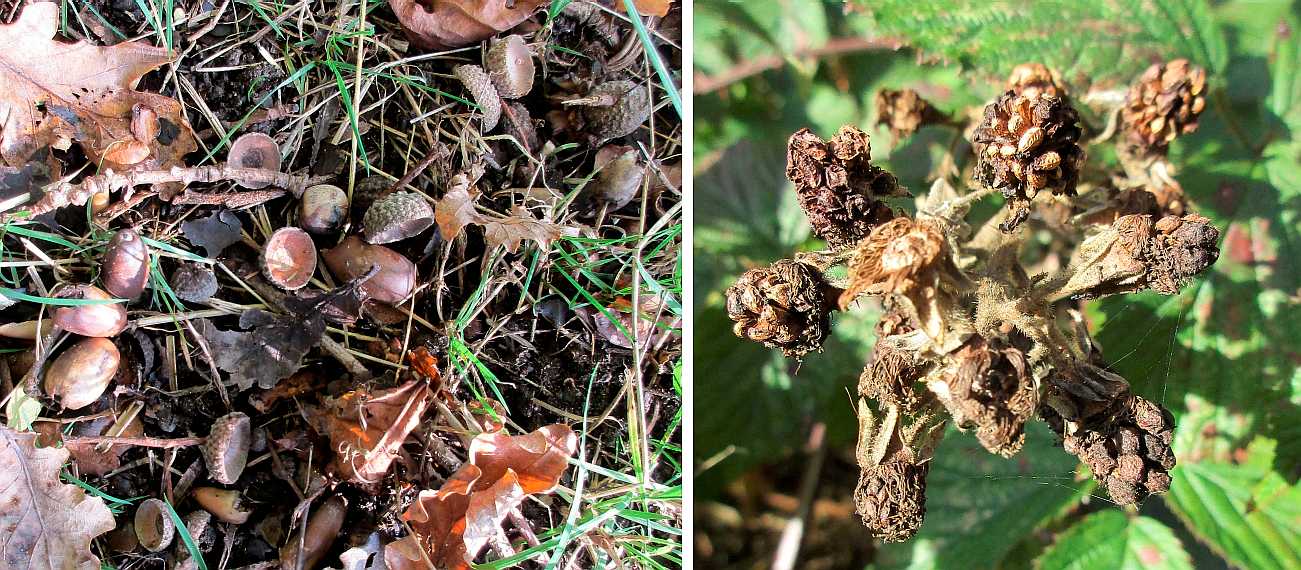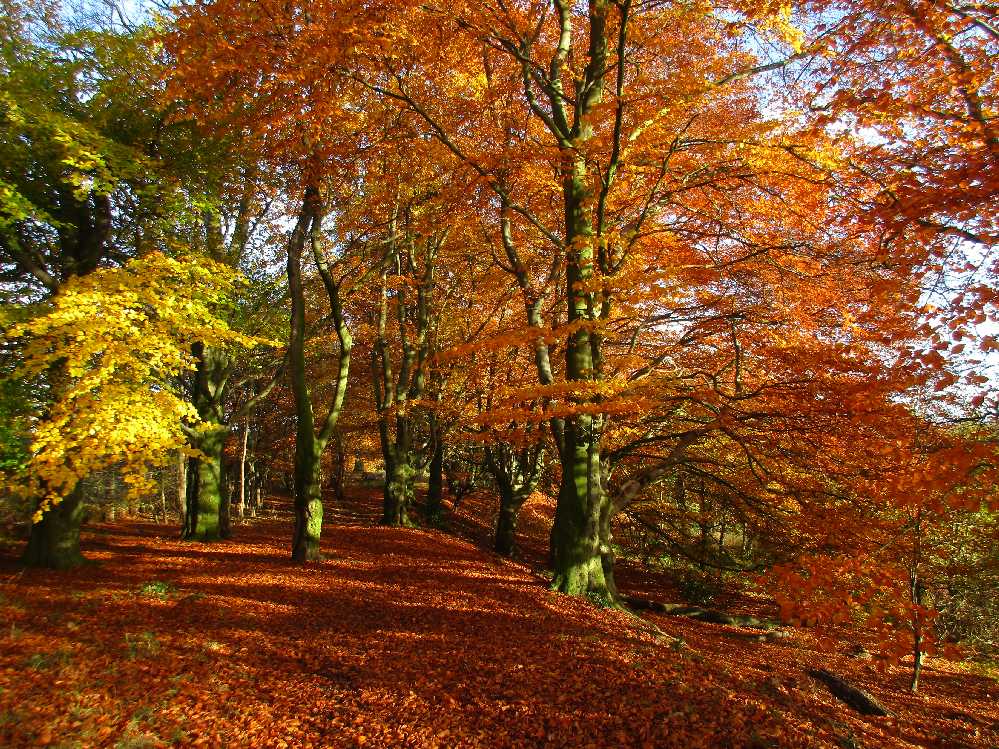Summertime saw the longest days, the highest temperatures, and the most rapid build-up by photosynthesis carried out by the leaves of green plants. With that process winding down the most obvious feature of the countryside is the colour change followed by the falling of those leaves. This involves a vast re-deployment of resources, much being taken down for over-winter storage in roots and other underground structures. Meanwhile, those once-useful woodland leaf skeletons fall to produce carpet patterns entirely free of charge.


The main walking routes round the Nature Reserve become literally covered in leaves. One can be excused for wondering if they can ever be clear again. But Mother Nature has that problem in hand. Winds will blow some into undergrowth areas. Earthworms will pull some down into the soil, to eat or to line their burrows. All the fungi and invertebrate animals will gradually dispose of the rest. In any case, the carpets enhance rather than interfere with the pleasures of autumn walks.
In fact fungi steal a march on some leaves, becomimg established on the near-dead leaves while they are still on the treee. So in some cases the fungus itself or the discolouration is visible as soon as the leaves fall to the gound. These examples are of beech and willow.
| Conversely, oak leaves may be retained for a long time, eventually falling, as here, on top of December snow. |  |
|
 |

Tree species differ in how they manage this autumn change of life-style. The leaves of ash trees simply fall off, apparently: they're still green when they reach the ground (in earlier pictures) though it is probable that most food materials will have gone down into storage. Maple and sycamore species' leaves turn a variety of colours: they may drop immediately or stay in place for a week or more. Beech tend to turn coppery-brown. Our third picture is of the humble bramble - which is strange as a proportion of (green) leaves are retained right through the winter.

Mill Green Nature Reserve entrance always offers a welcome, perhaps never more than when wearing its autumn array. Then the immediately adjoining beech woods may again provide favourite walking routes for dog-walkers, joggers, in fact all country lovers. Our views cover the end of October to the end of November.

Autumn is, of course, the season for fruits. Pictured here we have (1) hips on a wild rose; (2) hawthorn haws; (3) holly berries; (4) sloes, collected by some for making sloe gin, on blackthorn; and (5) less abundantly, dogwood berries.
But these are only the obvious food sources for wildlife at the end of October: by that time oakwood acorns have dropped to the ground and all bramble fruits have been used or have withered away.
|
 |








